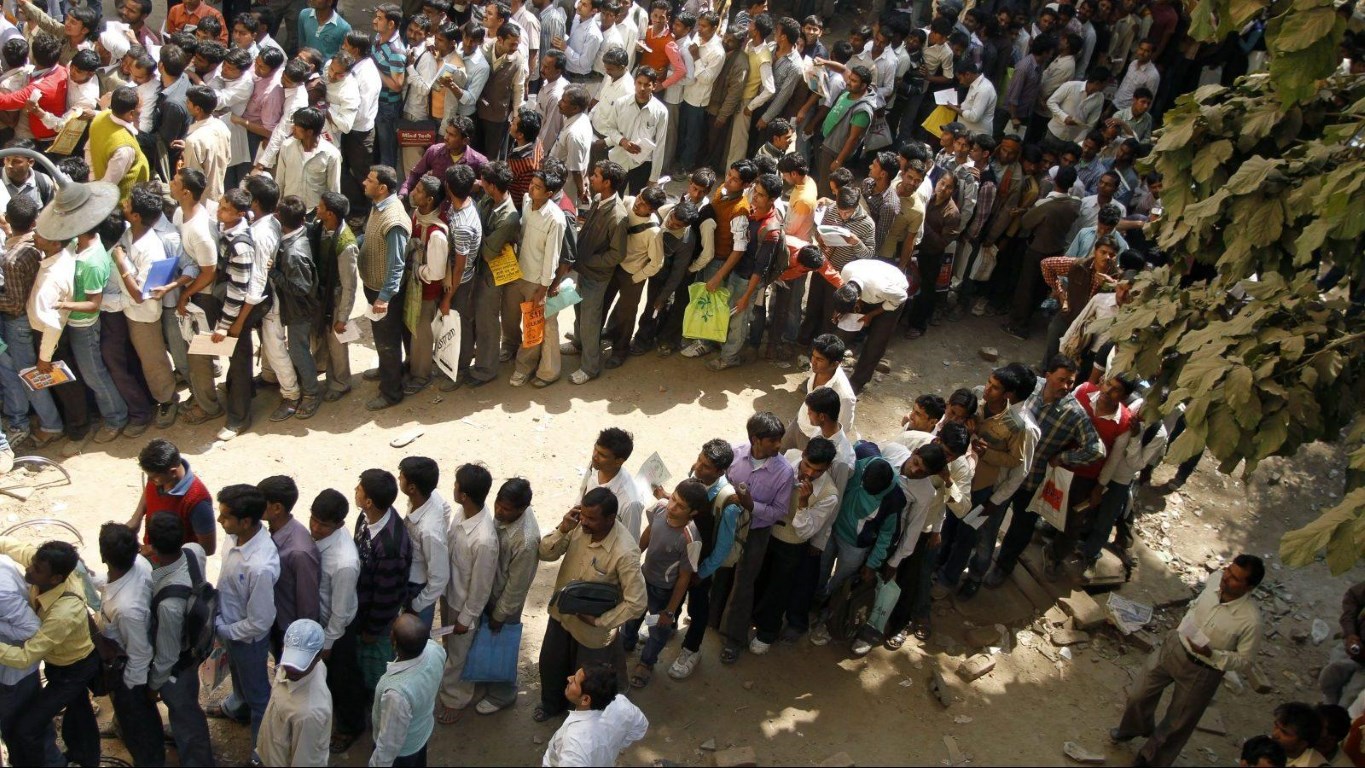India’s unemployment rate highest in 45 years
February 1, 2019 | Expert Insights

An official survey that has been withheld by the government shows India’s unemployment rate rose to a 45-year high during 2017-2018, delivering a blow to Prime Minister Narendra Modi just months before what is expected to be a closely fought general election.
Background
Unemployment is defined as a situation where someone of working age is not able to get a job but would like to be in full-time employment. The unemployment rate is a measure of the prevalence of unemployment and it is calculated as a percentage by dividing the number of unemployed individuals by all individuals currently in the labour force. During periods of recession, an economy usually experiences a relatively high unemployment rate.
In addition to these comprehensive theories of unemployment, there are a few categorizations of unemployment that are used to more precisely model the effects of unemployment within the economic system. Some of the main types of unemployment include structural unemployment and frictional unemployment, as well as cyclical unemployment, involuntary unemployment, and classical unemployment.
India’s unemployment rate for 2018 was reported to be 3.53 per cent.
Analysis
The assessment by the National Sample Survey Office conducted between July 2017-June 2018, showed the unemployment rate stood at 6.1 per cent, the highest since 1972-73, the newspaper reported. The report said that joblessness stood at 7.8 per cent in urban areas compared with 5.3 parts in the countryside.
The data is significant because this was the first comprehensive assessment of India’s employment situation conducted after Modi’s decision in November 2016 to withdraw most of the country’s banknotes from circulation overnight, the report said. “We have not released the report. I do not want to comment on it,” Pravin Srivastava, India’s chief statistician told Reuters.
The gloomy jobs data could be awkward for Modi’s government to explain with a general election looming and opinion polls already showing the ruling Bharatiya Janata Party would be unlikely to keep its parliamentary majority.
Modi came to power in 2014 promising to galvanize the economy and boost employment prospects for the millions of young Indians entering the jobs market each year.
While India’s economy has been expanding by 7 per cent plus annually — the fastest pace among major economies — its uneven growth has meant that there are not enough new jobs to keep pace. And critics say the government’s claims of economic success have sounded increasingly hollow.
Political controversy over the survey erupted after the acting chairman and another member of the body that reviewed the jobs data resigned saying there was a delay in its release. The head of the government-funded National Statistical Commission P.C. Mohanan said that he and colleague J. Meenakshi were unhappy at the non-publication of jobs data that had been due for release in December. He alleged interference by other state agencies over backdated GDP data.
A statistics ministry official said the NSSO had submitted the report, but it was up to the government to decide when it should be released. However, another senior official, dealing with data, said the government was delaying the release of the survey as the findings were so dismal, and there were plans to incorporate data on persons added in the social security network that could help improve the overall picture.
Pronab Sen, former chief statistician of India said unemployment in India has been rising since 2012 but the attempts to suppress the publication of data was not a solution. The last report published by the statistics ministry had shown that the unemployment rate rose to 5.0 per cent in 2015/16 from 4.9 per cent in the previous year and 4.0 per cent in 2012/13.
The unemployment among males stood at 4.3 per cent and 8.7 per cent among women in 2015/16, the government data showed. Earlier, the Centre for Monitoring Indian Economy, a leading independent think-tank, said the country lost as many as 11 million jobs last year.
This shortage of jobs is compounded by depressed wages, with 82 per cent of men and 92 per cent of women earning less than Rs 10,000 per month. Earlier this month, the Centre for Monitoring Indian Economy, a leading independent think-tank, said the country lost as many as 11 million jobs last year.
Counterpoint
NITI Aayog Vice Chairman Rajiv Kumar on Thursday said that a news story claiming that the unemployment rate in India stood at a 45-year high during 2017-18, was "not verified”.
"Government did not release the data (on jobs) as it is still being processed. When the data is ready we will release it," Rajiv Kumar said today.
Assessment
Our assessment is that India needs to achieve not only economic growth but employment generation as well. We believe that the relationship between growth and employment generation has become weaker over time. Unemployment has many impacts on the government, companies and on the people. For the government, it would mean higher supply side cost and lower GDP, for the companies it would mean lesser demand and an increase in the demand for inferior goods and a lower standard of living for the common man.








Comments